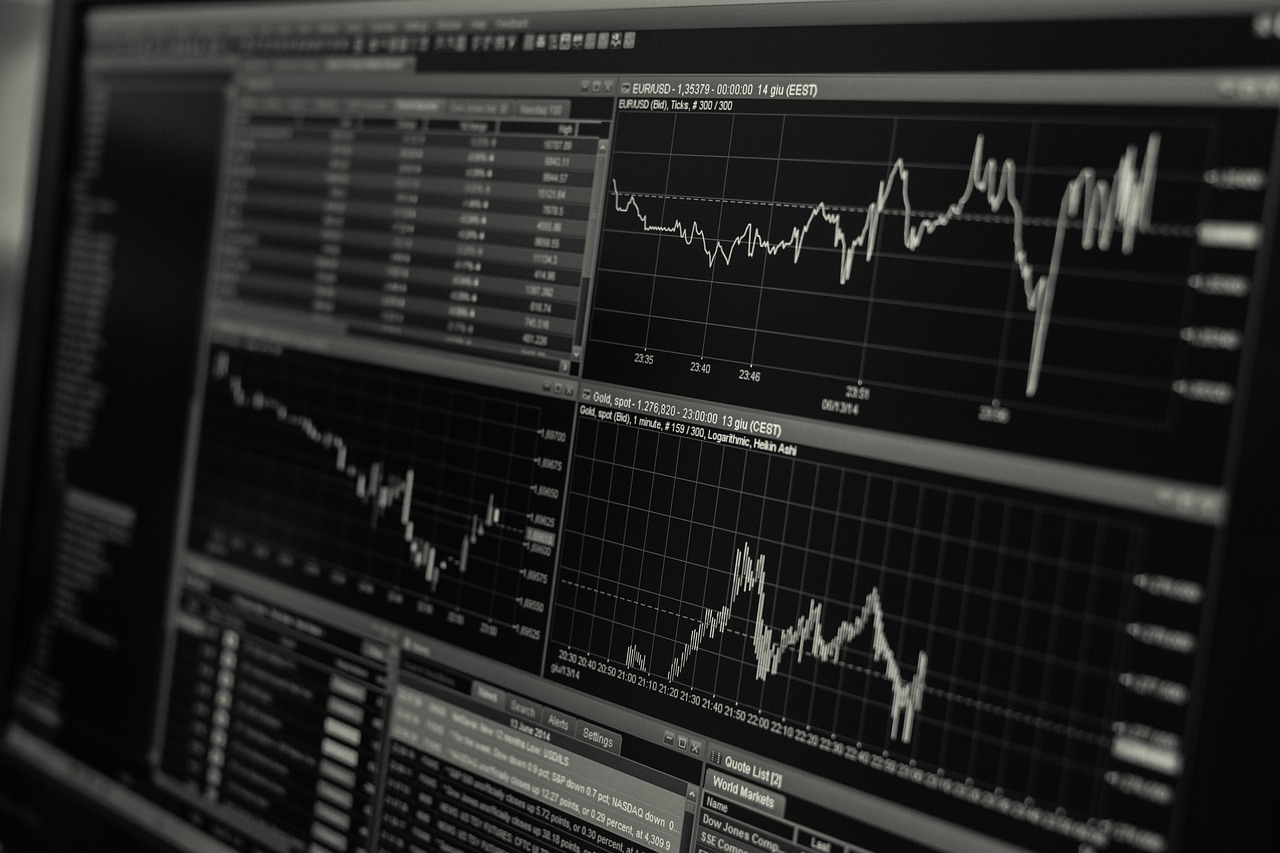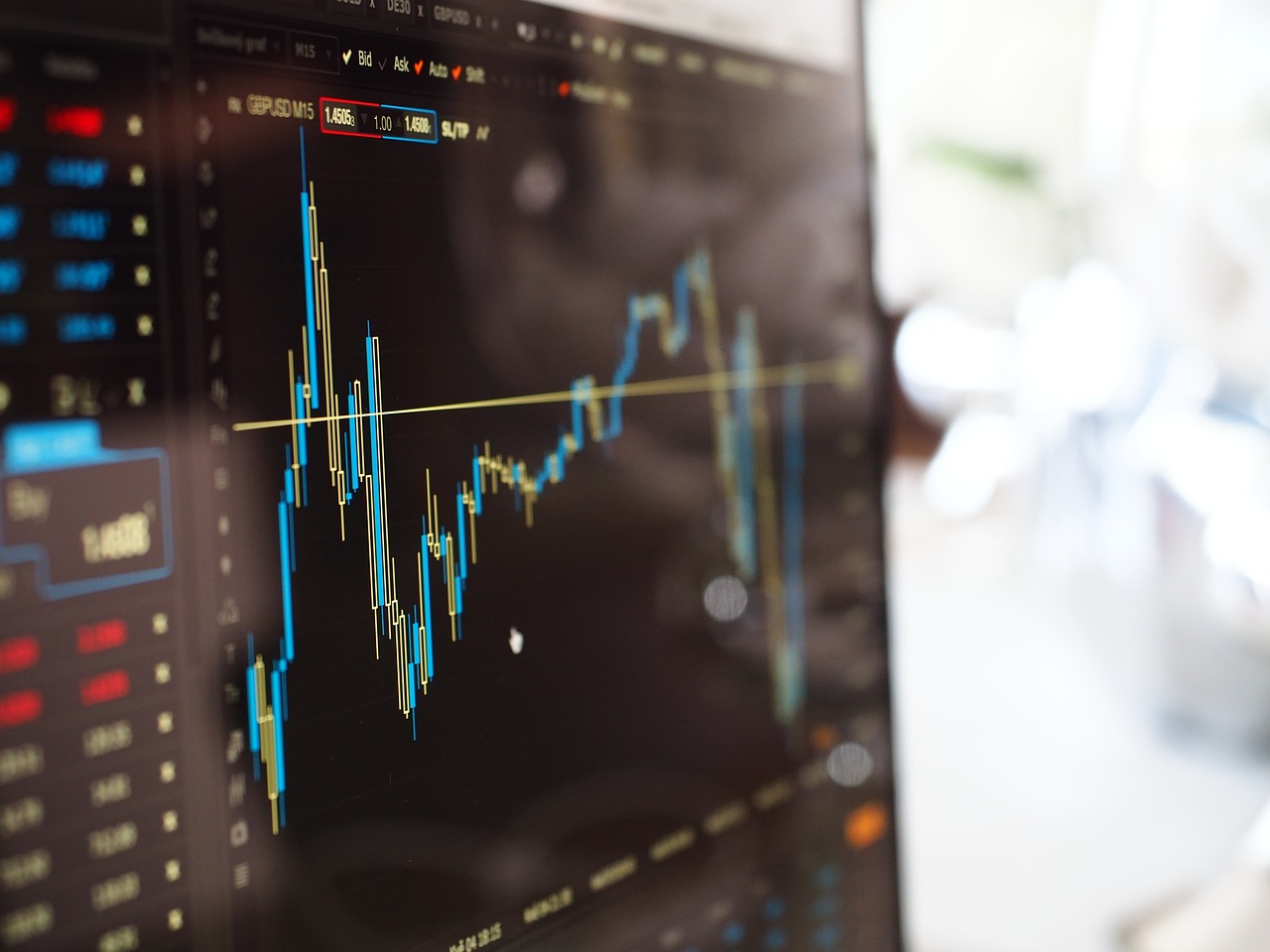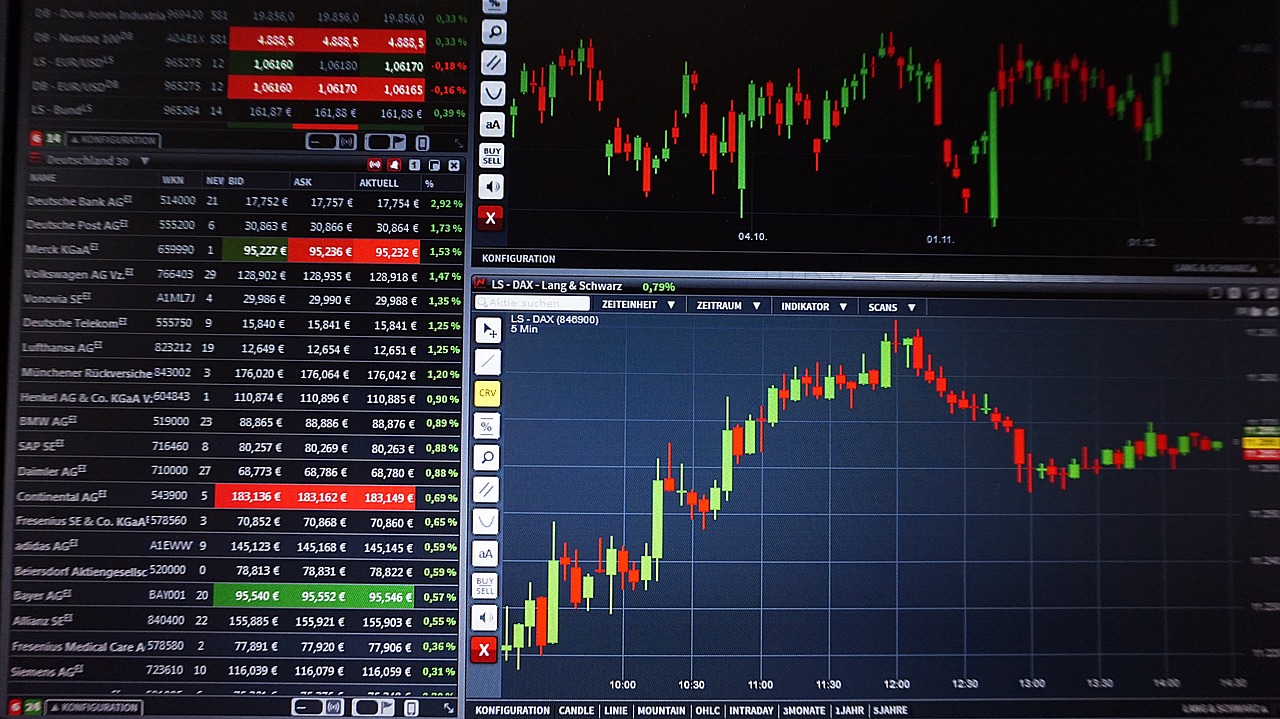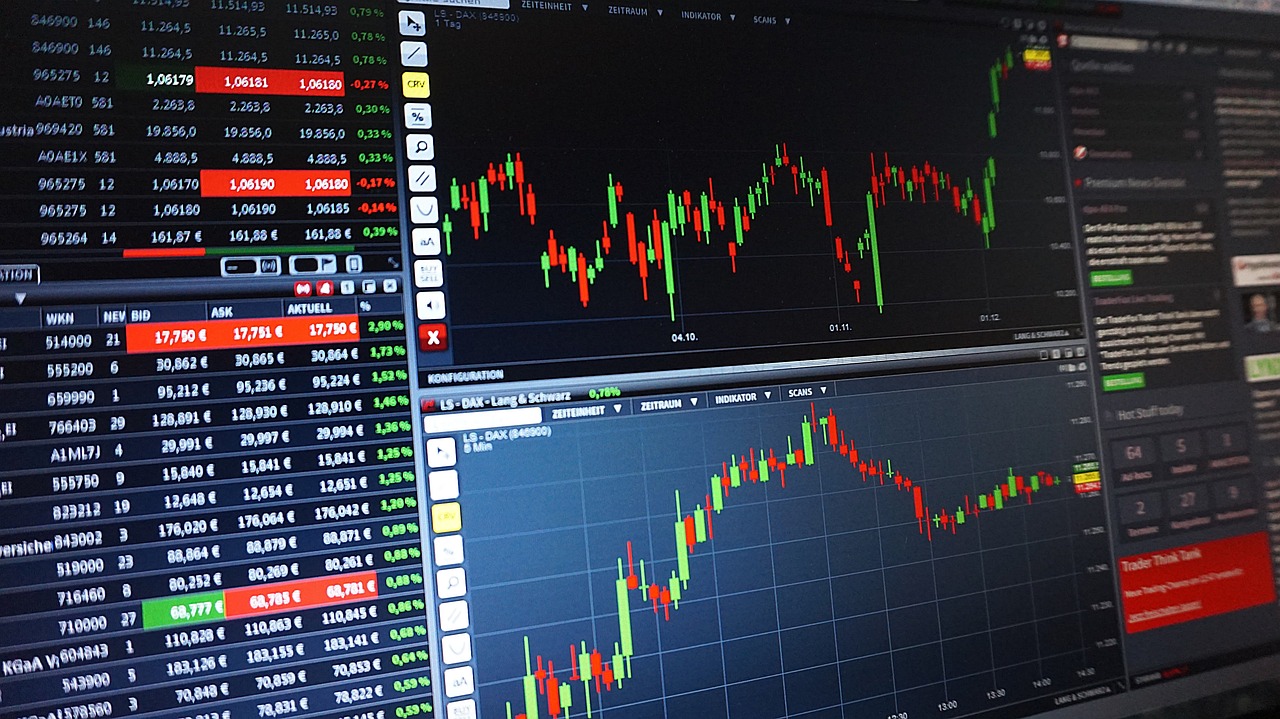How to Utilize Historical Data in Trading Strategies
In the fast-paced world of trading, making informed decisions can mean the difference between profit and loss. One of the most powerful tools at a trader's disposal is historical data. This treasure trove of information provides insights into past market behaviors, allowing traders to spot patterns, trends, and potential opportunities. By leveraging historical data, traders can enhance their strategies and improve their decision-making processes, ultimately leading to more successful trading outcomes.
Imagine you're a detective, piecing together clues from the past to solve a mystery. Each piece of historical data is like a clue that, when analyzed correctly, can reveal the bigger picture of market movements. Whether you're a day trader looking for short-term gains or a long-term investor seeking to understand broader market trends, historical data can serve as your guiding light.
Understanding how to effectively utilize this data is not just about crunching numbers; it involves a strategic approach that combines various types of data, technical indicators, and backtesting methods. Let's dive deeper into how traders can harness the power of historical data to craft robust trading strategies.
At its core, historical data encompasses all the past market information that traders can analyze. This includes price movements, trading volumes, and even economic indicators. By studying this data, traders can identify patterns that may repeat in the future, allowing for more accurate predictions about market behavior.
For instance, consider a stock that has consistently risen during a particular season or after a specific economic event. By recognizing these patterns, traders can position themselves advantageously, buying low and selling high based on past performance. This is where the magic of historical data comes into play—it's not just numbers; it's the story of the market's behavior over time.
There are several types of historical data that traders can utilize, each serving a distinct purpose in the trading strategy. The most common types include:
- Price Data: This includes historical prices of assets, which can be analyzed to identify trends and reversals.
- Volume Data: Analyzing the number of shares traded can provide insights into market strength or weakness.
- Economic Indicators: Data such as interest rates, inflation, and employment figures can influence market trends and should be considered in any trading strategy.
Understanding the nuances of these data types allows traders to tailor their strategies to fit specific market conditions and objectives. For example, a trader focusing on short-term gains may prioritize price and volume data, while a long-term investor might pay more attention to economic indicators.
Price data analysis is crucial for traders seeking to understand market movements. By examining past price trends, traders can identify potential entry and exit points for their trades. This involves looking for patterns such as support and resistance levels, which indicate where prices have historically struggled to rise above or fall below.
The choice between daily and weekly data can significantly impact a trader's strategy. Daily data offers a granular view of short-term movements, making it ideal for day traders who thrive on quick trades. On the other hand, weekly data provides a broader perspective, helping traders identify long-term trends and market sentiment. Understanding the differences between these two types of data is crucial for tailoring strategies to specific trading goals.
When analyzing historical data, it's essential to consider both long-term and short-term trends. Long-term trends can reveal overarching market behavior, while short-term trends can highlight immediate opportunities. A balanced approach that incorporates insights from both perspectives can lead to more effective trading strategies.
Volume data is another critical component of historical analysis. It indicates the number of shares traded over a specific period and can signal market strength or weakness. For instance, if a stock's price is rising but the volume is low, it may indicate a lack of conviction in that price movement. Conversely, a price increase accompanied by high volume often suggests strong market support.
Technical indicators derived from historical data can provide additional insights that enhance trading strategies. For example, moving averages and the Relative Strength Index (RSI) are widely used to make informed decisions based on past performance. These indicators can help traders identify trends and potential reversals, giving them an edge in the market.
Moving averages smooth out price data over specific periods, making it easier to identify trends. By analyzing moving averages, traders can determine optimal entry and exit points based on historical price behavior. For instance, a trader may look for a crossover of short-term and long-term moving averages as a signal to buy or sell.
The RSI is a momentum oscillator that measures the speed and change of price movements. It can indicate overbought or oversold conditions, helping traders make decisions based on historical trends. A high RSI may suggest that an asset is overbought and due for a correction, while a low RSI may indicate that it is oversold and could rebound.
Backtesting is a powerful method for traders to evaluate the effectiveness of their strategies using historical data. By applying trading strategies to past market conditions, traders can refine their approaches and increase the likelihood of success in live trading. This process allows traders to identify strengths and weaknesses in their strategies, enabling them to make informed adjustments.
To effectively backtest a strategy, traders must define specific parameters, including timeframes and entry/exit rules. A well-structured backtest can reveal valuable insights into how a strategy would have performed historically, providing a foundation for future trading decisions.
Analyzing backtest results is critical for assessing the viability of trading strategies. Traders should pay attention to metrics such as win rate, average return, and drawdown. Understanding these metrics allows traders to make informed adjustments to their strategies, enhancing their chances of success in live trading.
While historical data is invaluable, it's essential to recognize its limitations. Market conditions are constantly evolving, and factors such as economic shifts or geopolitical events can impact the reliability of past data in predicting future outcomes.
The dynamics of the market evolve over time, meaning that strategies that worked in the past may not be effective in the current environment. Traders must remain adaptable and consider changing conditions to stay ahead of the curve.
The quality and completeness of historical data can vary significantly. Ensuring access to accurate and comprehensive data is vital for effective analysis and strategy development in trading. Traders should prioritize reputable sources to enhance the reliability of their analyses.
1. How can historical data improve my trading strategy?
Historical data allows traders to identify patterns and trends that can inform their trading decisions, leading to more successful outcomes.
2. What types of historical data should I focus on?
Focus on price data, volume data, and relevant economic indicators to develop a well-rounded trading strategy.
3. How do I backtest my trading strategy?
Backtesting involves applying your trading strategy to historical data to evaluate its performance. Define your parameters and analyze the results to refine your approach.
4. What are the limitations of using historical data?
While historical data is useful, it may not always predict future market conditions accurately due to changing dynamics and external factors.
5. How important are technical indicators in trading?
Technical indicators provide additional insights that can enhance trading strategies, helping traders make informed decisions based on historical performance.

Understanding Historical Data
When we talk about historical data in trading, we're diving into a treasure trove of past market information that can significantly influence our trading decisions. This data encompasses various elements such as prices, volumes, and trends, all of which play a crucial role in shaping a trader's strategy. Imagine having a map that shows you where others have gone wrong or right; that's what historical data offers. By analyzing this information, traders can spot patterns that may repeat themselves, leading to more informed predictions about future market movements.
Understanding the significance of historical data is like having a time machine for traders. It allows you to look back and see how the market reacted to different events, helping you to gauge potential future reactions. For instance, if you notice that a particular stock tends to rise after earnings reports, you might consider investing in it before the next report. This isn't just guesswork; it's informed decision-making based on solid evidence from the past.
Moreover, the types of historical data available can be quite diverse. You have price data, which shows how much a stock was worth at different times, and volume data, which indicates how many shares were traded. Additionally, there are economic indicators that reflect broader market conditions. Each of these data types serves a unique purpose and can be utilized differently in trading strategies. For example, while price data can help identify trends, volume data can signal market strength or weakness. By combining these different types of data, traders can create a more comprehensive view of the market landscape.
In summary, understanding historical data isn't just about looking at numbers; it's about interpreting those numbers to make better decisions. It's like piecing together a puzzle where each piece represents a different aspect of the market's past. When traders take the time to analyze this data, they empower themselves to navigate the often turbulent waters of trading with greater confidence and insight.

Types of Historical Data
When diving into the world of trading, understanding the different is crucial. Each type serves a unique purpose and can significantly influence your trading strategies. Let’s explore some of the primary categories of historical data that traders utilize:
1. Price Data: This is perhaps the most common type of historical data. It includes information about past prices of assets, such as stocks, commodities, or currencies. Analyzing price data helps traders identify trends, reversals, and potential entry and exit points. For instance, a trader might look at a stock's price over the past year to determine its general movement and to spot any significant price patterns.
2. Volume Data: Volume data reveals the number of shares or contracts traded in a given period. This type of data is essential because it provides insights into the strength or weakness of a price movement. For example, if a stock's price rises significantly but the volume remains low, it may indicate that the price increase is not supported by strong buying interest, which could be a red flag for traders.
3. Economic Indicators: These are statistics that provide information about the overall health of the economy and can impact market performance. Traders often pay attention to indicators like GDP growth rates, unemployment rates, and inflation data. These indicators can serve as a backdrop against which traders analyze price and volume data, helping them make more informed decisions.
In summary, understanding these types of historical data is like having a map in a vast landscape. It guides traders through the complexities of the market, helping them to navigate potential risks and seize opportunities. By analyzing price and volume data alongside economic indicators, traders can develop a more comprehensive view of market dynamics, ultimately enhancing their trading strategies.
As you delve deeper into trading, remember that the interplay between these data types can reveal valuable insights. For instance, a sudden spike in volume accompanying a price increase might signal a strong trend, while a decrease in volume during a price rise could suggest a reversal is on the horizon. Keeping these nuances in mind can set you apart in your trading endeavors.
- What is the importance of historical data in trading? Historical data helps traders identify trends and make informed predictions about future market movements.
- How can I access historical data? Historical data can be accessed through various trading platforms, financial news websites, and market analysis tools.
- What types of historical data should I focus on? Focus on price data, volume data, and relevant economic indicators to develop a well-rounded trading strategy.
- Can historical data guarantee future success in trading? While historical data is a valuable tool, it cannot guarantee future outcomes due to changing market conditions.

Price Data Analysis
Price data analysis is a crucial component of any successful trading strategy. By examining historical price movements, traders can uncover valuable insights into market behavior, helping them make informed decisions. Think of it as a detective sifting through clues to solve a mystery. Each price point tells a story, and by piecing these stories together, traders can identify trends, reversals, and potential entry and exit points.
When analyzing price data, it’s essential to consider the context in which these movements occurred. For instance, a sharp price increase might indicate strong buying interest, but it could also be a reaction to external news or market sentiment. Therefore, traders should not just look at the price alone but also consider the broader market conditions and events that might have influenced these movements.
One effective way to visualize price data is through charts. Traders often use line charts, candlestick charts, or bar charts to represent price changes over time. Each chart type has its own advantages:
- Line Charts: Great for showing price movements over a specific period, allowing traders to quickly identify trends.
- Candlestick Charts: Provide more information by showing the open, high, low, and close prices for a given time frame, which can reveal market sentiment.
- Bar Charts: Similar to candlestick charts but use bars to represent price movements, offering a clear visual representation of trading ranges.
Moreover, understanding the difference between daily and weekly data is vital for traders. Daily data offers a granular view of short-term price movements, which can be beneficial for day traders looking to capitalize on quick fluctuations. On the other hand, weekly data helps identify broader trends, making it more suitable for swing traders who hold positions for several days or weeks.
Additionally, traders should pay close attention to long-term vs. short-term trends. Long-term trends can reveal the overall direction of the market, while short-term trends can highlight immediate trading opportunities. For example, if a trader notices a long-term uptrend but sees a short-term pullback, they might consider this a buying opportunity, anticipating that the price will bounce back. Balancing these perspectives is crucial for developing a robust trading strategy.
In summary, price data analysis is not just about looking at numbers; it’s about understanding the story behind those numbers. By effectively analyzing price movements, traders can enhance their decision-making process and improve their chances of success in the market. So, the next time you look at a price chart, remember: you’re not just observing trends; you’re uncovering the secrets of the market!
- What is price data analysis? Price data analysis involves studying historical price movements to identify trends and reversals, aiding traders in making informed decisions.
- Why is it important to analyze historical price data? Analyzing historical price data helps traders understand market behavior, identify patterns, and predict future price movements.
- What types of charts are commonly used in price data analysis? Common charts include line charts, candlestick charts, and bar charts, each providing different insights into price movements.
- How do daily and weekly data differ in trading? Daily data offers insights into short-term movements, while weekly data helps identify broader trends, making each useful for different trading strategies.

Daily vs. Weekly Data
When it comes to trading, the choice between daily and weekly data can significantly impact your strategy and decision-making process. Daily data offers a granular view of the market, capturing every twist and turn in price movements. This level of detail is essential for traders who thrive on short-term fluctuations and are looking to capitalize on immediate opportunities. For instance, day traders often rely on daily data to identify quick entry and exit points, making split-second decisions based on real-time market conditions.
On the other hand, weekly data provides a broader perspective, smoothing out the noise of daily volatility. This type of data is particularly useful for swing traders and long-term investors who want to capture overarching trends without getting bogged down by the daily ups and downs. By analyzing weekly data, traders can gain insights into the overall market direction, helping them make more informed decisions about when to enter or exit a position. It’s like comparing a close-up photograph to a panoramic view; both have their merits, but they serve different purposes.
To illustrate the differences further, let’s consider a comparison table:
| Aspect | Daily Data | Weekly Data |
|---|---|---|
| Time Frame | Short-term (daily fluctuations) | Medium to long-term (weekly trends) |
| Volatility | Higher volatility, more noise | Lower volatility, smoother trends |
| Use Case | Day trading, scalping | Swing trading, long-term investing |
| Decision-Making | Quick, reactive decisions | Strategic, proactive decisions |
Ultimately, the choice between daily and weekly data should align with your trading style and goals. If you're the type who enjoys the thrill of rapid trades and can handle the stress that comes with it, daily data might be your best friend. However, if you prefer a more laid-back approach, focusing on the bigger picture, weekly data could be your ticket to success. Remember, the key is to find a balance that works for you and complements your overall trading strategy.
- What is the best time frame for trading? The best time frame depends on your trading style. Day traders typically use daily data, while swing traders may prefer weekly data.
- Can I use both daily and weekly data in my strategy? Absolutely! Many traders combine both to gain a comprehensive understanding of market trends.
- How do I know which data to trust? Always ensure you're using high-quality data from reputable sources to make informed decisions.

Long-Term vs. Short-Term Trends
When it comes to trading, understanding the distinction between long-term and short-term trends is crucial. Think of long-term trends as the big picture, akin to viewing a vast landscape from a mountaintop. You can see the overall direction, the hills and valleys, and how they relate to each other. This perspective helps traders identify the prevailing market sentiment over extended periods, which can be invaluable for making strategic decisions. Long-term trends often reflect fundamental shifts in the economy, industry changes, or significant geopolitical events, which can influence market behavior for months or even years.
On the other hand, short-term trends are like zooming in on a specific area of that landscape. They reveal immediate fluctuations and can highlight opportunities that might be missed when only looking at the long-term view. Short-term trading can be likened to riding a wave; it requires quick reflexes and a keen sense of timing to capitalize on price movements that occur within days, hours, or even minutes. This approach often involves technical analysis and relies on indicators that can signal potential entry and exit points.
Balancing these two perspectives is essential for effective trading strategies. A trader who focuses solely on short-term trends may miss out on the more significant movements that could provide substantial gains, while someone who only looks at long-term trends might neglect lucrative opportunities that arise in the short term. Therefore, integrating both approaches allows traders to adapt their strategies based on current market conditions.
To illustrate this balance, consider the following table that summarizes key differences between long-term and short-term trends:
| Aspect | Long-Term Trends | Short-Term Trends |
|---|---|---|
| Time Frame | Months to years | Minutes to days |
| Focus | Overall market direction | Immediate price movements |
| Analysis Type | Fundamental analysis | Technical analysis |
| Risk Level | Generally lower risk | Higher risk due to volatility |
In conclusion, the interplay between long-term and short-term trends can significantly affect trading outcomes. By recognizing the strengths and weaknesses of each approach, traders can craft a well-rounded strategy that not only seeks to capture immediate gains but also positions them favorably for long-term success.
- What is the best way to analyze long-term trends? Long-term trends are best analyzed using fundamental analysis, which considers economic indicators, company performance, and market conditions over time.
- How can I effectively trade short-term trends? To trade short-term trends effectively, use technical analysis tools such as moving averages, RSI, and candlestick patterns to identify entry and exit points.
- Can I combine long-term and short-term strategies? Absolutely! Many traders find success by integrating both strategies, allowing them to capitalize on immediate opportunities while keeping an eye on the broader market direction.

Volume Data Insights
When it comes to trading, understanding volume data is like having a secret weapon in your arsenal. Volume data refers to the number of shares or contracts traded in a specific period, and it provides crucial insights into market strength or weakness. Think of it as the heartbeat of the market—just like a doctor listens to a patient's heart to gauge health, traders analyze volume to assess market vitality.
High trading volume often indicates strong interest in a security, suggesting that the price movement is backed by solid investor sentiment. Conversely, low volume can signal a lack of interest, which may lead to price stagnation or volatility. This relationship between price and volume is vital for traders aiming to make informed decisions. For instance, if a stock's price is rising but volume is decreasing, it might be a red flag, hinting that the price increase may not be sustainable.
To effectively incorporate volume data into your trading strategy, consider the following insights:
- Volume Spikes: Sudden spikes in volume can indicate significant news or events impacting a stock. Traders often use these spikes to identify potential breakout opportunities.
- Volume Trends: Analyzing volume trends over time can help traders spot patterns. For example, increasing volume during an uptrend can confirm the strength of the movement.
- Volume and Price Divergence: If price moves in one direction while volume moves in the opposite direction, it may signal an impending reversal. This divergence can be a crucial indicator for traders to watch.
Moreover, combining volume data with price action can enhance your trading strategy. For instance, a breakout above a resistance level accompanied by high volume is often seen as a strong signal to enter a trade. On the other hand, if a breakout occurs with low volume, it might be wise to exercise caution.
In conclusion, volume data is not just a number; it's a powerful tool that can provide insights into market trends and help traders make more informed decisions. By paying attention to volume alongside price movements, you can significantly enhance your trading strategy and increase your chances of success.
- What is the significance of volume in trading?
Volume indicates the level of interest in a stock, helping traders gauge market strength and potential price movements. - How can I analyze volume data?
Traders can analyze volume data by looking for spikes, trends, and divergences in conjunction with price movements. - What should I do if I see low volume during a price increase?
Low volume during a price increase may suggest a lack of conviction in the price movement, so it's wise to be cautious before entering a trade.

Incorporating Technical Indicators
In the ever-evolving world of trading, technical indicators serve as invaluable tools that can greatly enhance a trader's ability to make informed decisions. These indicators, derived from historical data, provide insights that help traders identify potential entry and exit points in the market. By analyzing past performance, traders can better understand market trends and make predictions about future movements. But how exactly can these indicators be incorporated into trading strategies?
First and foremost, it's essential to recognize that not all indicators are created equal. Each technical indicator has its unique strengths and weaknesses, and understanding these differences is crucial. For instance, indicators can generally fall into two categories: trend-following indicators and momentum indicators. Trend-following indicators, like moving averages, help traders identify the direction of the market, while momentum indicators, such as the Relative Strength Index (RSI), gauge the speed of price movements. By combining these indicators, traders can develop a more comprehensive view of the market.
Moreover, the incorporation of technical indicators into trading strategies requires a systematic approach. Traders often start by selecting a few key indicators that align with their trading style. For example, a day trader might focus on short-term indicators like the Exponential Moving Average (EMA) and the MACD (Moving Average Convergence Divergence), while a swing trader may lean towards longer-term indicators. The key is to find the right balance and not overwhelm oneself with too many indicators, which can lead to confusion.
Once traders have identified their preferred indicators, the next step is to establish clear entry and exit rules. This involves determining the conditions under which a trade will be initiated or closed based on the signals provided by the chosen indicators. For instance, a trader using the RSI might decide to enter a trade when the RSI falls below 30 (indicating oversold conditions) and exit when it rises above 70 (indicating overbought conditions). By setting these rules in advance, traders can eliminate emotional decision-making and stick to their strategies.
It's also crucial to backtest any trading strategy that incorporates technical indicators. Backtesting allows traders to apply their strategies to historical data, simulating how the strategy would have performed in the past. This can provide valuable insights into the effectiveness of the chosen indicators and help traders refine their approaches. A well-structured backtest can reveal critical metrics such as win rate, average return, and maximum drawdown, which are essential for evaluating the viability of a trading strategy.
In summary, incorporating technical indicators into trading strategies can significantly enhance decision-making. By understanding the different types of indicators, establishing clear entry and exit rules, and backtesting strategies, traders can leverage historical data to improve their chances of success. Remember, the goal is not just to predict market movements but to respond effectively to them. As the market continues to change, so too should your approach, ensuring that you remain adaptable and informed.
- What are technical indicators? Technical indicators are mathematical calculations based on historical price, volume, or open interest information that traders use to forecast future price movements.
- How do I choose the right technical indicators? Selecting the right indicators depends on your trading style. Consider your objectives and whether you prefer trend-following or momentum indicators.
- Can I rely solely on technical indicators for trading? While technical indicators are helpful, it's essential to combine them with other forms of analysis, such as fundamental analysis, to make well-rounded trading decisions.
- What is backtesting and why is it important? Backtesting is the process of testing a trading strategy on historical data. It helps traders evaluate the effectiveness of their strategies before applying them in live markets.

Moving Averages
Moving averages are a fundamental tool in the arsenal of any trader looking to make sense of the chaotic world of market prices. They serve as a powerful indicator by smoothing out price data over a specific period, allowing traders to identify trends that might otherwise go unnoticed. Imagine trying to read a book with pages that are constantly flipping; that’s what it feels like to analyze raw price data without the clarity that moving averages provide. By averaging the prices, traders can get a clearer picture of the market's direction.
There are two primary types of moving averages that traders commonly use: Simple Moving Averages (SMA) and Exponential Moving Averages (EMA). The SMA calculates the average price over a specified number of periods, treating all prices equally. In contrast, the EMA gives more weight to recent prices, making it more responsive to new information. This responsiveness can be crucial in fast-moving markets, where every second counts.
| Type of Moving Average | Calculation Method | Best Used For |
|---|---|---|
| Simple Moving Average (SMA) | Average of prices over a specified number of periods | Identifying long-term trends |
| Exponential Moving Average (EMA) | Weighted average that gives more importance to recent prices | Capturing short-term price movements |
One of the most practical applications of moving averages is in determining entry and exit points. Traders often look for crossover points, where a short-term moving average crosses above a long-term moving average, indicating a potential buying opportunity. Conversely, when the short-term average crosses below the long-term average, it may signal a selling opportunity. This strategy is known as the Moving Average Crossover Strategy, and it can be a game-changer for traders who are looking to capitalize on price movements.
However, it’s essential to remember that moving averages, like any trading tool, are not foolproof. They can lag behind the market since they are based on past prices. This lag can sometimes result in missed opportunities or late signals. Therefore, savvy traders often combine moving averages with other indicators or market analysis techniques to enhance their decision-making process. For instance, using moving averages alongside volume data can provide additional confirmation of a trend's strength, making it a more robust strategy.
In summary, moving averages are invaluable for traders seeking to navigate the complexities of financial markets. They simplify price data, highlight trends, and offer actionable insights into when to enter or exit trades. Just like a compass helps a traveler find their way, moving averages can guide traders through the unpredictable landscape of market fluctuations.
- What is the main difference between SMA and EMA? The SMA treats all price points equally, while the EMA gives more weight to recent prices, making it more responsive to new market conditions.
- How do I choose the right period for my moving average? The choice of period depends on your trading strategy; shorter periods are better for day trading, while longer periods suit long-term investing.
- Can moving averages be used for any market? Yes, moving averages can be applied to any financial market, including stocks, forex, and commodities.

Relative Strength Index (RSI)
The is a powerful tool in the arsenal of traders, acting as a momentum oscillator that measures the speed and change of price movements. Imagine it as a compass that helps traders navigate through the tumultuous seas of market fluctuations. The RSI generates values between 0 and 100, providing insights into whether an asset is overbought or oversold. Typically, an RSI above 70 indicates that an asset might be overbought, suggesting a potential price correction, while an RSI below 30 signals that it may be oversold, hinting at a possible price rebound.
What makes the RSI particularly appealing is its capacity to pinpoint potential reversal points in the market. When traders observe an RSI that crosses above the 30 threshold, it can signal a buying opportunity. Conversely, when it dips below 70, it may indicate a selling point. This dynamic nature of the RSI allows traders to make informed decisions based on historical trends and current market conditions.
To illustrate the effectiveness of the RSI, let’s consider a simple table that outlines typical RSI levels and their implications:
| RSI Level | Market Condition | Action Suggestion |
|---|---|---|
| 0 - 30 | Oversold | Consider buying |
| 30 - 70 | Neutral | Market is stable |
| 70 - 100 | Overbought | Consider selling |
Incorporating the RSI into your trading strategy can enhance your decision-making process significantly. However, it's crucial to remember that the RSI should not be used in isolation. Pairing it with other indicators, such as moving averages or volume analysis, can provide a more comprehensive view of market conditions. Just like a chef wouldn’t rely on just one ingredient to create a delicious dish, traders should blend various tools to formulate a robust strategy.
In summary, the RSI is not just a number; it’s a reflection of market sentiment and momentum. By understanding how to interpret its signals, traders can better position themselves to capitalize on market movements and make informed decisions that align with their trading goals. So, the next time you look at a chart, don’t forget to check the RSI—it might just be the key to unlocking your trading potential.
- What is the best RSI setting for trading? While the standard setting is 14 periods, traders often adjust it based on their specific strategies and timeframes.
- Can RSI be used for all types of assets? Yes, RSI can be applied to stocks, forex, commodities, and cryptocurrencies, making it a versatile tool for various markets.
- How can I avoid false signals from the RSI? To minimize false signals, consider using the RSI in conjunction with other indicators and market analysis techniques.

Backtesting Trading Strategies
Backtesting is an essential component of developing a successful trading strategy. It involves applying your trading rules to historical market data to see how they would have performed in the past. This process is akin to a dress rehearsal for a play; it allows traders to refine their script before the real performance begins. By simulating trades based on historical data, traders can evaluate the effectiveness of their strategies without risking real money. This not only builds confidence but also highlights areas that may need improvement.
Setting up a backtest requires careful consideration of several parameters. First, traders need to define the timeframe for their analysis. Are you looking at daily, weekly, or monthly data? Each timeframe can yield different insights and is suited to different trading styles. Next, traders must establish entry and exit rules. These rules dictate when to buy or sell based on specific criteria, such as price movements, technical indicators, or market conditions.
Once these parameters are set, the actual backtesting can begin. Traders can use various software tools or platforms that allow them to input their strategies and historical data. The backtesting process will generate results that show how the strategy would have performed, including metrics such as total return, maximum drawdown, and win rate. Understanding these metrics is crucial, as they provide insights into the risk and reward profile of the strategy.
| Metric | Description |
|---|---|
| Total Return | The overall profit or loss generated by the strategy over the backtesting period. |
| Maximum Drawdown | The largest peak-to-trough decline in the account's value during the backtest. |
| Win Rate | The percentage of trades that were profitable compared to the total number of trades. |
After conducting a backtest, analyzing the results is where the real learning happens. Traders should look for patterns in their performance. For instance, did the strategy perform better in certain market conditions? Was there a consistent drawdown that indicates a flaw in the approach? These insights can guide traders in making informed adjustments to their strategies.
However, it's important to remember that backtesting has its limitations. Just because a strategy performed well in the past doesn't guarantee future success. Market conditions can change, and what worked previously may not hold up under different circumstances. Therefore, traders should remain flexible and ready to adapt their strategies as needed.
- What is the best software for backtesting trading strategies? There are several platforms available, including MetaTrader, TradingView, and Amibroker, each offering unique features for backtesting.
- How much historical data should I use for backtesting? A good rule of thumb is to use at least five years of historical data to ensure the strategy is tested across different market conditions.
- Can I trust backtest results completely? While backtests provide valuable insights, they are not foolproof. Always consider market changes and use backtesting as one of several tools in your trading arsenal.

Setting Up Backtesting
Setting up backtesting is a crucial step for any trader looking to evaluate the effectiveness of their strategies using historical data. The process may seem daunting at first, but once you break it down into manageable steps, it becomes much more approachable. Think of backtesting as a rehearsal for a play; you want to practice your lines and actions before the big performance, ensuring everything flows smoothly.
To begin, traders need to define specific parameters that will guide the backtesting process. This includes selecting the timeframe for the analysis, which can range from minutes to years, depending on the trading strategy you wish to evaluate. For instance, if you are focusing on day trading, you might choose a shorter timeframe, such as 1-minute or 5-minute intervals. Conversely, if you are a swing trader, you might opt for daily or weekly data.
Next, you must establish clear entry and exit rules. These rules dictate when to buy or sell a particular asset and are the backbone of your trading strategy. For example, you might decide to enter a trade when a stock's price crosses above its 50-day moving average and exit when it falls below that average. Having these rules documented helps maintain consistency and objectivity during the backtesting process.
Once you have defined your parameters and rules, you can utilize backtesting software or platforms that allow you to input this data. Many trading platforms offer built-in backtesting features, enabling you to simulate trades based on historical data. This is where the magic happens! You can run your strategy against past market conditions and observe how it would have performed.
As you analyze the results, it's essential to pay attention to key metrics such as:
- Win Rate: The percentage of trades that were profitable.
- Average Gain/Loss: The average profit or loss per trade.
- Maximum Drawdown: The largest drop from a peak to a trough in your equity curve, indicating potential risk.
By interpreting these metrics, you can assess the viability of your strategy and make informed adjustments. Remember, backtesting is not just about finding a strategy that works; it’s about understanding why it works and under what conditions it may fail. This knowledge allows you to refine your approach, ensuring that when you transition to live trading, you are well-prepared to face the market's challenges.
In conclusion, setting up backtesting is a systematic process that involves defining parameters, creating rules, and utilizing tools to simulate trades. By diligently following these steps, you can enhance your trading strategies and increase your chances of success in the dynamic world of trading.
- What is backtesting? Backtesting is the process of testing a trading strategy on historical data to evaluate its effectiveness.
- Why is backtesting important? It helps traders understand how their strategies would have performed in the past, allowing for informed decision-making and strategy refinement.
- Can I rely solely on backtesting for trading decisions? While backtesting is valuable, it's essential to consider current market conditions and other factors when making trading decisions.
- What tools can I use for backtesting? Many trading platforms offer built-in backtesting tools, and there are also dedicated software solutions available for more advanced analysis.

Interpreting Backtest Results
Interpreting backtest results is a critical step in refining your trading strategies. Once you've applied your strategy to historical data, the next challenge is to sift through the results to gauge its effectiveness. It’s not just about the win rate; there are various metrics that can provide insights into how well your strategy might perform in real-world trading scenarios. For instance, understanding drawdown, which refers to the peak-to-trough decline during a specific period, can help you evaluate the risk associated with your strategy. A high drawdown might indicate that the strategy is too aggressive or not well-suited to current market conditions.
Moreover, when analyzing your backtest results, consider the profit factor, which is the ratio of gross profit to gross loss. A profit factor greater than 1 suggests that your strategy is profitable, while a value below 1 indicates a loss. This metric, combined with your win rate, can paint a clearer picture of your strategy's overall performance. Here’s a simple table that summarizes some key metrics you might want to focus on:
| Metric | Description |
|---|---|
| Win Rate | The percentage of profitable trades out of total trades. |
| Average Win | The average profit from winning trades. |
| Average Loss | The average loss from losing trades. |
| Profit Factor | The ratio of total profit to total loss. |
| Maximum Drawdown | The largest drop from a peak to a trough in your trading equity. |
Another aspect to consider is the time frame used during backtesting. Results can vary significantly depending on whether you’re testing a strategy over days, weeks, or months. Be sure to analyze how your strategy performs across different time frames to identify its strengths and weaknesses. For example, a strategy might work well on a daily chart but fail miserably on a weekly chart. This variability underscores the importance of adaptability in trading.
Finally, it’s essential to keep in mind that backtesting results are not a guarantee of future performance. The market is influenced by countless factors, many of which are unpredictable. Therefore, it’s wise to approach your findings with a critical eye and consider them as part of a broader strategy that includes ongoing market analysis and risk management. In summary, interpreting backtest results requires a holistic view of various metrics, an understanding of market dynamics, and a readiness to adapt your strategy as conditions change.
- What is backtesting? Backtesting is the process of applying a trading strategy to historical data to evaluate its effectiveness.
- Why is it important to analyze backtest results? Analyzing backtest results helps traders refine their strategies and assess potential risks and rewards before live trading.
- What metrics should I focus on when interpreting backtest results? Key metrics include win rate, profit factor, average win/loss, and maximum drawdown.
- Can backtesting guarantee future success? No, backtesting results are not guarantees of future performance due to the unpredictable nature of the markets.

Limitations of Historical Data
While historical data is an invaluable tool for traders, it’s essential to recognize its limitations. Just like a map can guide you through familiar terrain but may mislead you in an unfamiliar landscape, historical data has its constraints that can affect decision-making. One of the primary limitations is that market conditions are not static; they evolve over time due to various factors such as economic shifts, regulatory changes, and technological advancements. What worked yesterday may not work today, and this is something every trader must keep in mind.
Moreover, the reliability of historical data can be compromised by the quality and completeness of the data itself. Inconsistent data collection methods, errors in data entry, or even missing data points can lead to inaccurate analyses. Imagine trying to solve a puzzle with missing pieces; the final picture will never be complete. Thus, ensuring access to accurate and comprehensive historical data is crucial for effective analysis and strategy development.
Another significant limitation is the impact of external events that historical data cannot account for. For instance, unexpected geopolitical events, natural disasters, or sudden market crashes can dramatically alter market dynamics. Traders who rely solely on past trends might find themselves unprepared for such occurrences. It's like relying on a weather forecast based on last year's climate patterns; while it might give you a general idea, it won't account for sudden storms or heatwaves that could disrupt your plans.
Furthermore, traders often fall into the trap of overfitting their strategies to historical data. This means they create models that perform exceptionally well on past data but fail to predict future movements accurately. It's akin to training for a marathon by only running on a treadmill; while you might excel in that controlled environment, real-world conditions could be vastly different. This over-optimization can create a false sense of security, leading to poor performance in live trading situations.
Finally, it's essential to consider the psychological aspects of trading. Historical data can provide insights into market behavior, but it cannot predict how traders will react to new information or market changes. The human element—fear, greed, and emotional responses—plays a significant role in market movements. Relying solely on historical trends without considering the psychological factors at play can lead to misguided decisions.
In summary, while historical data is a powerful tool for traders, it’s essential to be aware of its limitations. By acknowledging these constraints and incorporating adaptability and critical thinking into their strategies, traders can enhance their decision-making processes and improve their chances of success in the ever-changing market landscape.
- What is historical data in trading? Historical data in trading refers to past market information, including prices, volumes, and trends that traders analyze to predict future market movements.
- How can I ensure the quality of historical data? To ensure quality, use reputable data providers, verify data consistency, and cross-reference with multiple sources to confirm accuracy.
- Can historical data predict future market movements? While historical data can provide insights into trends, it cannot guarantee future outcomes due to changing market conditions and external factors.
- What is overfitting in trading strategies? Overfitting occurs when a trading model is too closely tailored to historical data, leading to poor performance in real-world trading scenarios.

Market Changes
Market changes are an inevitable part of the trading landscape. Just like the seasons shift, so do the dynamics of the market. What worked yesterday might not work today, and that’s the beauty and challenge of trading. Traders need to be aware that markets are influenced by a myriad of factors, including economic indicators, geopolitical events, and even technological advancements. For instance, a sudden change in interest rates can send shockwaves through the stock market, altering trends and behaviors that traders have relied on for years.
Moreover, the rise of algorithmic trading and high-frequency trading has transformed traditional market dynamics. These technologies can execute trades in milliseconds, often leading to rapid price fluctuations that can catch even seasoned traders off guard. Therefore, it’s crucial for traders to stay informed about the latest market trends and technological developments. Ignoring these changes can be akin to sailing a ship without adjusting your sails to the winds—eventually, you’ll find yourself off course.
To adapt to these changes, traders should regularly review their strategies and be willing to pivot when necessary. Here are some key considerations to keep in mind:
- Stay Informed: Regularly read financial news and analysis to understand current market conditions.
- Analyze Economic Indicators: Keep an eye on reports like GDP growth, unemployment rates, and inflation, as they can significantly impact market trends.
- Assess Political Events: Geopolitical tensions, elections, and policy changes can create volatility in the markets.
In conclusion, being adaptable and responsive to market changes is essential for any trader. Embracing a mindset of continuous learning and flexibility will not only enhance your trading strategies but also equip you to navigate the unpredictable waters of the financial markets with confidence.
- What is historical data in trading? Historical data refers to past market information, including prices, volumes, and trends that traders use to analyze and predict future market movements.
- Why is backtesting important? Backtesting allows traders to test their strategies against historical data to evaluate their effectiveness and make necessary adjustments before applying them in live trading.
- How can I stay updated on market changes? Regularly follow financial news, subscribe to market analysis reports, and utilize trading platforms that provide real-time data and insights.

Data Quality and Availability
When diving into the world of trading, one of the most crucial aspects to consider is the quality and availability of historical data. Without reliable data, your trading strategies can become like a ship lost at sea—adrift and vulnerable to the tides of market fluctuations. So, what does data quality really mean? It encompasses accuracy, completeness, and timeliness. If your data is inaccurate or outdated, it can lead you down a path of poor decision-making.
Moreover, the availability of data is just as important. Traders need access to a wide range of historical data, including price movements, trading volumes, and economic indicators. This data should be easily accessible and come from reputable sources. Think of it as having a well-stocked toolbox; if you have the right tools at your disposal, you're far more likely to complete your project successfully. In trading, the right tools are high-quality data and robust analysis techniques.
Here are some key points to consider regarding data quality and availability:
- Accuracy: Ensure that the data you are using is correct and reflects true market conditions. Errors can lead to misguided strategies.
- Completeness: Historical data should encompass a comprehensive range of time frames and market conditions to provide a well-rounded perspective.
- Timeliness: The data must be current. Using outdated information can skew your analysis and misrepresent market trends.
- Source Reliability: Always verify the credibility of the data sources. Utilizing established platforms can minimize the risk of using flawed data.
To illustrate the importance of data quality, consider the following table that compares two hypothetical data sources:
| Data Source | Accuracy | Completeness | Timeliness | Reliability Rating |
|---|---|---|---|---|
| Source A | High | Medium | Current | 4/5 |
| Source B | Medium | High | Outdated | 2/5 |
As you can see, while Source A has high accuracy, it lacks completeness. On the other hand, Source B offers a more comprehensive dataset but falls short on timeliness. This example highlights the necessity of balancing various aspects of data quality to make well-informed trading decisions.
In conclusion, the quality and availability of historical data are pivotal in shaping effective trading strategies. Traders must invest time in sourcing reliable data and continuously evaluate its relevance to adapt to ever-changing market dynamics. After all, in the fast-paced world of trading, having the right information at the right time can make all the difference between success and failure.
- What is historical data in trading? Historical data refers to past market information, including prices, volumes, and trends that traders use to analyze market behavior.
- Why is data quality important? High-quality data ensures accurate analysis, which leads to better trading decisions and improved chances of success.
- How can I find reliable data sources? Look for established financial platforms, market research firms, or trading software that provide comprehensive historical data.
- What should I do if I find discrepancies in my data? Always verify the data against multiple sources and consider using data cleaning techniques to rectify any inaccuracies.
Frequently Asked Questions
- What is historical data in trading?
Historical data in trading refers to past market information, including prices, volumes, and trends. It's like a treasure map that helps traders navigate the unpredictable waters of the market by revealing patterns and insights from previous behaviors.
- Why is historical data important for traders?
Understanding historical data allows traders to identify trends and make informed predictions about future market movements. It's essential for developing strategies that can adapt to changing market conditions, much like a seasoned sailor adjusting their sails based on the wind.
- What types of historical data should I consider?
Traders should consider various types of historical data, such as price data, volume data, and economic indicators. Each type serves a unique purpose; for example, price data helps in trend analysis, while volume data can indicate market strength or weakness.
- How do moving averages help in trading?
Moving averages smooth out price data over specific periods, helping traders identify trends and potential entry or exit points. Think of it as looking at a long stretch of road to see where it's headed rather than just focusing on the bumps along the way.
- What is backtesting, and why is it important?
Backtesting involves applying trading strategies to historical data to evaluate their effectiveness. It's crucial because it allows traders to refine their strategies based on past performance, increasing their chances of success in live trading, similar to a rehearsal before a big performance.
- What are the limitations of using historical data?
While historical data is valuable, it has limitations. Market conditions can change, and strategies that worked in the past may not be effective in the present. Traders need to stay adaptable and continuously assess the relevance of their data.
- How can I ensure the quality of historical data?
Ensuring access to accurate and complete historical data is vital for effective analysis. Traders should rely on reputable sources and platforms that provide high-quality data to avoid making decisions based on flawed information.



















